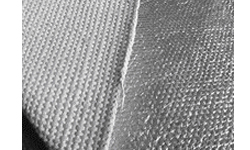Dust free Asbestos, also known as non-friable asbestos, refers to asbestos-containing materials (ACMs) that have been bonded or encapsulated to prevent the release of asbestos fibers into the air. Unlike friable asbestos that can easily crumble and release fibers,
Dust free Asbestos is less likely to pose an immediate health risk if left undisturbed. However, it can still affect air quality and pose health risks when it is disturbed or damaged during maintenance, repair, or renovation activities.

How can dust free asbestos affect air quality and health?
When dust free asbestos-containing materials are disturbed or damaged, they can release asbestos fibers that may become airborne and be inhaled by people nearby. These fibers can then lodge in the lungs and cause health problems, such as lung cancer, mesothelioma, and asbestosis. Moreover, asbestos fibers are hard to break down, so they can remain in the lungs for decades after exposure, increasing the risk of developing asbestos-related diseases later in life.
What are some common sources of dust free asbestos?
Dust free asbestos can be found in various building materials, such as cement, roofing, pipes, and insulation. It can also be present in some automotive parts, such as brakes and clutches. Workers in construction, manufacturing, and automotive industries are more likely to come into contact with dust free asbestos.
What are the regulations regarding dust free asbestos?
In the United States, the Environmental Protection Agency (EPA) regulates ACMs, including dust free asbestos, under the National Emission Standards for Hazardous Air Pollutants (NESHAP) program. NESHAP sets standards for handling, removal, and disposal of ACMs to protect both workers and the public from asbestos exposure.
How can dust free asbestos exposure be prevented?
Preventing exposure to dust free asbestos requires proper training, equipment, and procedures to handle ACMs safely. It is crucial to identify and label ACMs before commencing any maintenance, renovation, or repair work. Workers should use protective equipment, such as respirators and gloves, to minimize the risk of exposure. Proper disposal of ACMs is also crucial to prevent the release of asbestos fibers into the air.
In summary, while dust free asbestos may not pose an immediate health risk, it can still affect air quality and pose health risks when it is disturbed or damaged. Proper handling, removal, and disposal of ACMs is crucial to minimize the risk of exposure to asbestos fibers.
Ningbo Kaxite Sealing Materials Co., Ltd. is a professional manufacturer and exporter of asbestos-free gasket materials and sealing products. Our products are carefully designed to meet the highest quality standards and environment-friendly requirements. We provide excellent customer service and technical support to ensure customers' satisfaction. For more information about our products and services, please visit our website at https://www.industrial-seals.com or contact us at kaxite@seal-china.com.
Reference:
1. Selikoff IJ, Hammond EC, Churg J. Asbestos exposure, smoking, and neoplasia. JAMA. 1968 Mar 18;203(12):1003-9.
2. Hodgson JT, Darnton A. The quantitative risks of mesothelioma and lung cancer in relation to asbestos exposure. Ann Occup Hyg. 2000 Apr;44(8):565-601.
3. National Institute for Occupational Safety and Health (NIOSH). Asbestos fibers and other elongate mineral particles: state of the science and roadmap for research. DHHS (NIOSH) Publication No. 2011-159. 2011.
4. United States Environmental Protection Agency (EPA). Asbestos. Retrieved from https://www.epa.gov/asbestos.
5. International Agency for Research on Cancer (IARC). Asbestos (chrysotile, amosite, crocidolite, tremolite, actinolite, and anthophyllite). IARC Monogr Eval Carcinog Risks Hum. 2012;100(Pt C):219-309.
6. Occupational Safety and Health Administration (OSHA). Asbestos. Retrieved from https://www.osha.gov/SLTC/asbestos/index.html.
7. Agency for Toxic Substances and Disease Registry (ATSDR). Asbestos Toxicity. Retrieved from https://www.atsdr.cdc.gov/csem/csem.asp?csem=29&po=8.
8. McDonald JC, Armstrong B. Asbestos, cigarette smoking, and death rates. Br J Ind Med. 1988 Jun;45(6):382-6.
9. Leigh J, Driscoll T. Malignant mesothelioma in Australia, 1945-2002. Int J Occup Environ Health. 2003 Apr-Jun;9(2):206-17.
10. Stewart BW, Wild CP (Eds.). World Cancer Report 2014. Lyon, France: International Agency for Research on Cancer; 2014.
